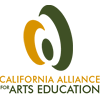The How and Why of Countywide Assessment in Napa
The Challenge: How do you set goals for a countywide advocacy effort with multiple partners and stakeholders?
The Strategy: Start with a countywide assessment to determine what arts education assets the county has and what is needs.
 The Story: In December 2013 Arts Council Napa Valley, along with the Napa County Office of Education and the California Alliance for Arts Education, convened with more than 50 Napa County educators, arts organizations, nonprofits, and community leaders at an early morning breakfast to garner support for arts education in Napa County schools, launching the Napa County Alliance for Arts Education (NCAAE). There was clear support within the group to work together to increase access to arts education in the county. The question was how. In a county with five school districts and 51 schools with a variety of needs, stakeholders and delivery systems, there was not a simple or obvious goal for their shared work.
The Story: In December 2013 Arts Council Napa Valley, along with the Napa County Office of Education and the California Alliance for Arts Education, convened with more than 50 Napa County educators, arts organizations, nonprofits, and community leaders at an early morning breakfast to garner support for arts education in Napa County schools, launching the Napa County Alliance for Arts Education (NCAAE). There was clear support within the group to work together to increase access to arts education in the county. The question was how. In a county with five school districts and 51 schools with a variety of needs, stakeholders and delivery systems, there was not a simple or obvious goal for their shared work.
Feedback from attendees indicated that the county had considerable arts assets, but also faced a number of very common obstacles to coordinating a countywide effort, including:
- Lack of centralized data articulating assets, needs, interests for key elements (non profit arts organizations, funders, students, workforce, and education)
- Duplication of assets in the county
- Lack of efficient channels for communication
- Limited equity and access (economic/cultural) in existing programs
- Lack of an arts education brand message
“Understandably, the various stakeholders in our group had varying concerns and perspectives,” says Robin Hampton, the coordinator for NCAAE, “They are already working hard, as teachers, arts organizations, funders and district officials, to improve access to arts education, and we didn’t want to reinvent the wheel or add another initiative to their plate.”
In response, the group decided that the best way to start was to undertake a 360 Assessment of arts education in Napa County. The findings will provide a way for stakeholders to get a clear picture of the current status of arts education throughout the county. It also means that in its first year, this newly formed group will produce a document that will be immediately useful to its stakeholders. Where there had been no countywide assessment, NCAAE will provide a document that policymakers, grant seekers and school administrators will be able to reference in their work. Providing value to stakeholders builds confidence in and ownership of the NCAAE effort. But the assessment is only the first step in a three-part process meant to inform advocacy efforts to increase arts education access. The group has laid out the following process for the work:
STEP 1. 360 Degree Assessment
The arts in education assessment will identify the environment relevant to:
- Stakeholders
- Resources (arts non profits, teaching artists, existing school programs, and funding)
- Needs (based on arts education standards, demographics, student culture/interests, and capacity)
STEP 2. Communication
a. Communicate to stakeholders the findings of the assessment and collect feedback
STEP 3. Strategy (to transform and position the arts)
- Working with stakeholders, the leadership team will develop common strategic goals and standards to be adopted by all participating organizations
Like a district or county arts plan, the assessment gives a varied group of stakeholders a unifying vision that will foster their work together. For Napa, this is a strong step toward systematic change in the county.
To learn more, read the 360 Assessment Executive Summary that describes these elements in detail. Does your district or county need help with an assessment or advocacy plan? Read more about how the California Alliance for Arts Education is working with local communities through the Local Advocacy Network.










